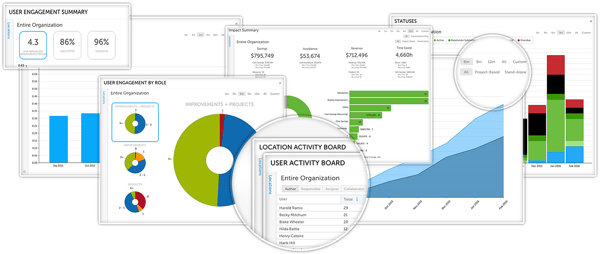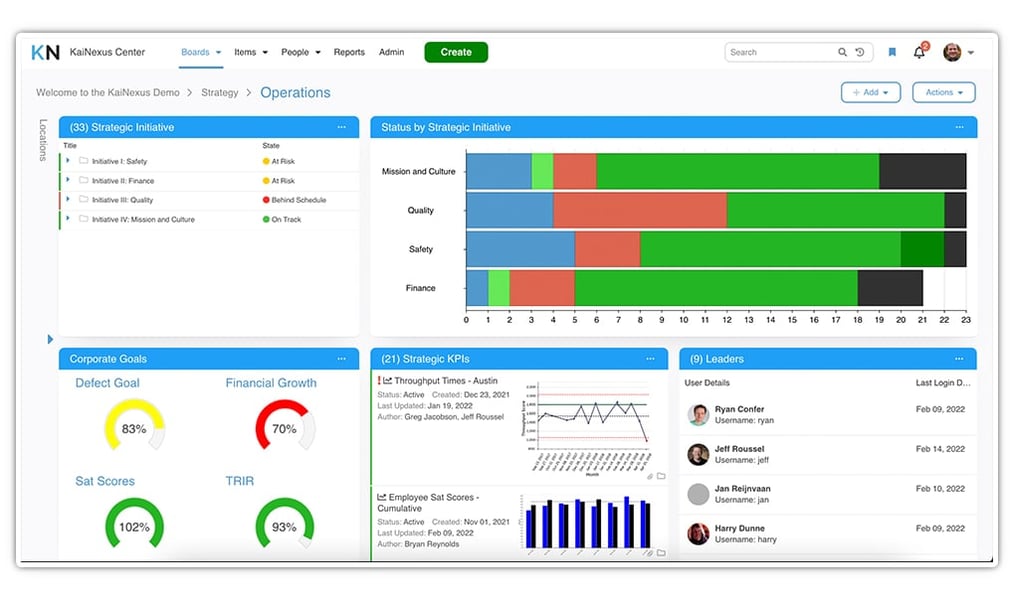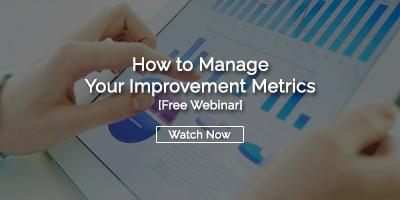 If you’ve decided to embrace the Lean business methodology, we offer our congratulations. It is an excellent approach to reducing waste, capturing opportunities for improvement, and creating a culture of innovation.
If you’ve decided to embrace the Lean business methodology, we offer our congratulations. It is an excellent approach to reducing waste, capturing opportunities for improvement, and creating a culture of innovation.
When most leaders start their Lean journey -- and it is a journey, we’re sure no one has achieved Lean perfection yet --
In addition to education, you and your team need the right tools in place to support Lean, and that starts with Lean management software.
Not only does software make your organization more effective at continuous improvement, but it also increases your strength as a leader.
Here’s why software should be a central part of your Lean strategy.
You Get a Real-time View into Improvement Activities
The Lean approach is centered around daily, incremental improvements. In most cases, these projects don’t require executive level intervention. Problems with workspace organization, inefficient forms, or sloppy data entry aren’t likely to land on your desk. But, in a twist of irony, those are precisely the types of problems that Lean is designed to resolve. With Lean software in place, you get a view of how issues like these are being tackled by your team. You may not get involved in many, but there is great value in knowing what types of problems are being identified, who is working to resolve them, and how quickly those improvement projects are moving through the pipe.

Company and Individual Goals are Consistent and Aligned
Many Lean leaders go through a strategic planning process, sometimes using tools known as Hoshin Kanri or Policy Deployment. There is a strategic vision for where the organization will be three to five years from now. To get there, everyone needs to be moving in lock-step and working toward the same game-changing objectives. Lean software sets up the structure for leaders to cascade goals from the C-suite down to the front line. Each person has a clear understanding of how their work relates to the overall goals, and performance evaluation can be driven by those same objectives. When everyone is aligned with the most essential purposes, decision making is more straightforward and opportunities for improvement become more apparent.

You Can Influence Lean Culture
Corporate culture is an interesting thing. Every organization has one, even if it isn’t intentional. The goal of Lean leaders is to infuse the culture with improvement-centric thinking and the willingness to engage. This isn’t easy because culture can’t be dictated. It is the sum of all of the cues people receive about what “normal” behavior looks like.
The Effort and Investment Underscores the Importance of Lean
You probably have software to manage every other important aspect of your business. Sales
Employee Recognition is Made Routine
Lean requires people to step out of their comfort zone and look at problems and processes in a new way. This can be uncomfortable, especially when the approach is new and the culture hasn’t been developed yet. The best way to reinforce the benefits of Lean and to get people excited about the possibilities for individual growth and career development is to recognize the people who get engaged and take risks. Look for a Lean software solution that has built-in improvement broadcasting so that you can celebrate success and the people who make it happen.
You Can Quantify the Impact of Lean
Implementing Lean is a big deal. It will change the principles on which your organization operates and impact the daily work of every member of the team. Therefore, it is essential that leaders are able to quantify the impact of improvement work and prove to employees, investors, boards, and others that the effort has been worth it.
No one ever said that the Lean transformation was easy. It requires a well thought out strategy and careful attention to many moving parts. Lean management software will go a long way toward putting you in command and control and supporting every person’s contribution to success.




Add a Comment